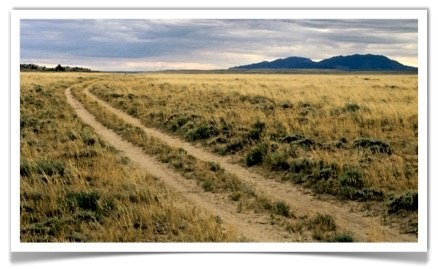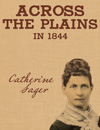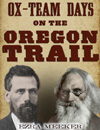Buried Alive!

ABOVE: Actual Oregon Trail ruts near Split Rock, Wyoming. You won’t find many elaborate gravesites on the Oregon Trail—because the pioneers were often in too much of a hurry to do anything fancy.
At least some of the emigrants who died en route to Oregon were probably buried alive. Why? The survivors were in a hurry.
For many years, cholera ravaged emigrants along the Oregon Trail. Whoever caught it was dead--no cure or treatment existed. Usually, the infected emigrant died in 24 hours or less.
If an entire wagon train stopped for an elaborate funeral, it would slow their progress. The Donner Party tragedy emphasized the urgency of traveling quickly. Too many delays meant the pioneers might not get to Oregon before winter--and then everyone might perish.
So on most wagon trains, the burials got shorter and shorter as more and more people died. Some even abandoned the terminally sick by the side of the Trail, where they would eventually die alone. The more humane wagon companies elected a "watcher" to wait with the dying person while the wagons forged ahead. It wouldn't take long for the watcher to catch up; a quick death, after all, was imminent.
Many watchers were in such a hurry that they started digging the grave long before their infected companion was dead. Needless to say, watching your own grave being dug was probably quite disturbing. And if you lingered too long? No one is sure, but evidence strongly suggests that some were accidentally buried before they took their final breath.




